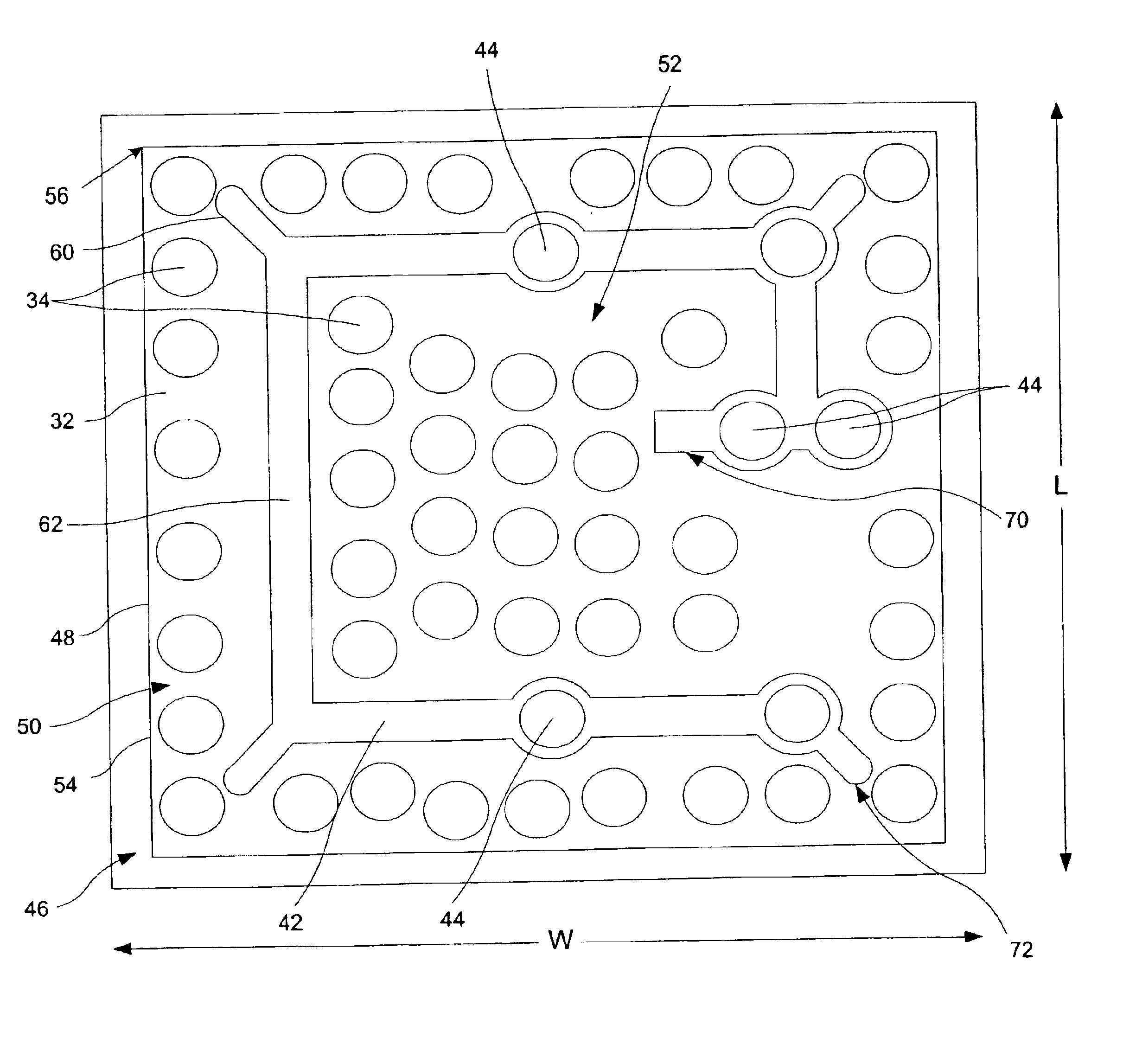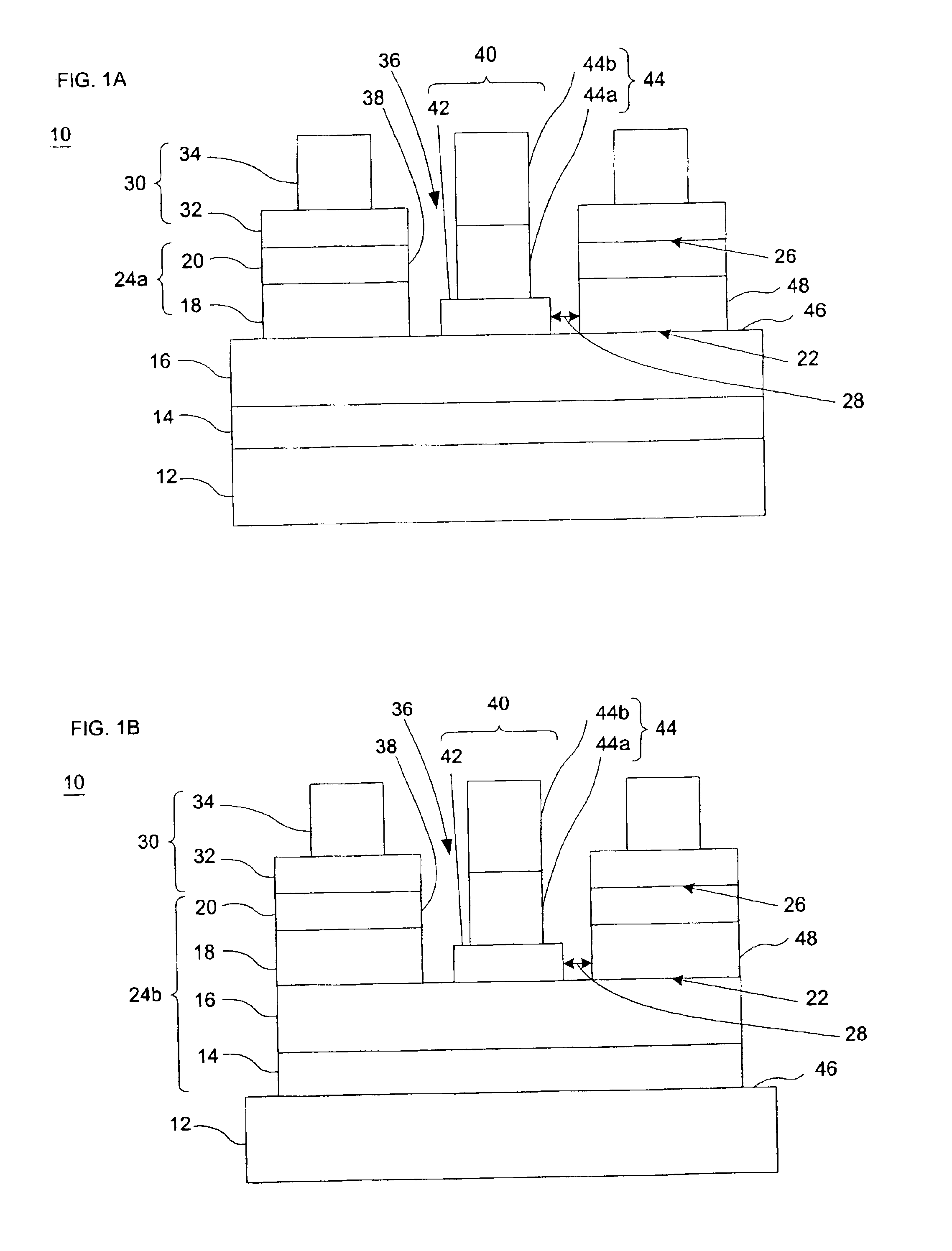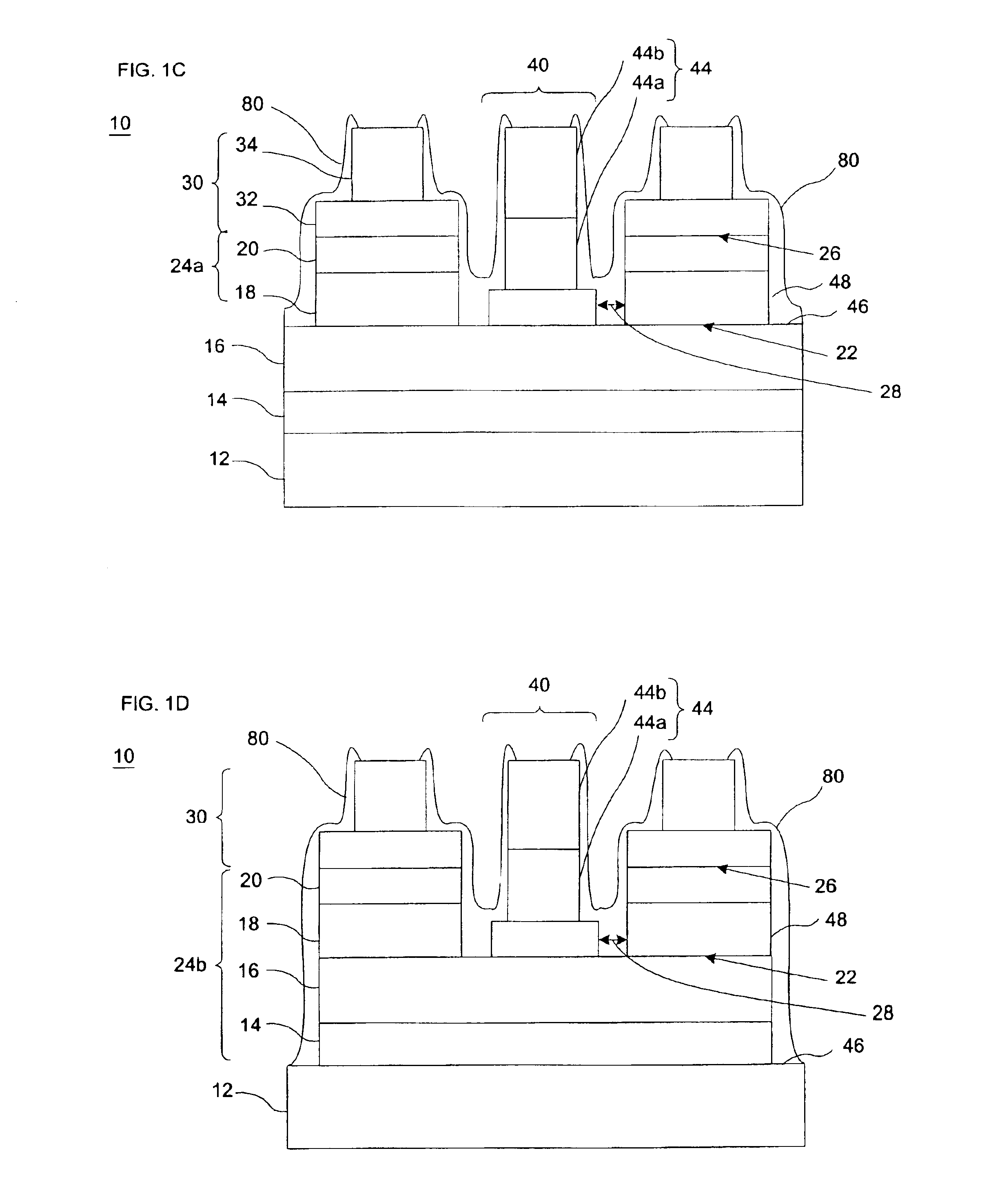Optimized contact design for flip-chip LED
a technology of flip-chip leds and contact design, applied in the field of optoelectronic devices, can solve problems such as not leading to an optimal solution, and achieve the effect of maximizing the contact area
- Summary
- Abstract
- Description
- Claims
- Application Information
AI Technical Summary
Benefits of technology
Problems solved by technology
Method used
Image
Examples
Embodiment Construction
[0026]In accordance with one embodiment of the present invention, FIGS. 1A-F illustrate an LED 10 having a stacked structure of semiconductor layers on a substrate 12. The substrate 12 is preferably transparent. The substrate 12 may comprise gallium-nitride based materials, alumina, AlN, ZnO, silicon carbide (SiC), sapphire or other suitable materials. The structure and composition of the various layers incorporated in the stack and the sequence of layers in the stack may be selected according to known principles and techniques to provide the desired emission characteristics. The fabrication processes used to form the stacked structure are also well known. Most commonly, the various layers which form the stacked structure are deposited on the substrate 12 in sequence by techniques such as metal organic chemical vapor deposition (“MOCVD”), molecular beam epitaxy (“MBE”) and the like.
[0027]The stacked structure includes a first region 16 having a semiconductor material of a first type...
PUM
 Login to View More
Login to View More Abstract
Description
Claims
Application Information
 Login to View More
Login to View More - Generate Ideas
- Intellectual Property
- Life Sciences
- Materials
- Tech Scout
- Unparalleled Data Quality
- Higher Quality Content
- 60% Fewer Hallucinations
Browse by: Latest US Patents, China's latest patents, Technical Efficacy Thesaurus, Application Domain, Technology Topic, Popular Technical Reports.
© 2025 PatSnap. All rights reserved.Legal|Privacy policy|Modern Slavery Act Transparency Statement|Sitemap|About US| Contact US: help@patsnap.com



